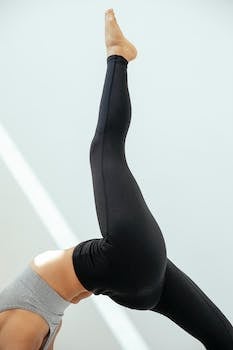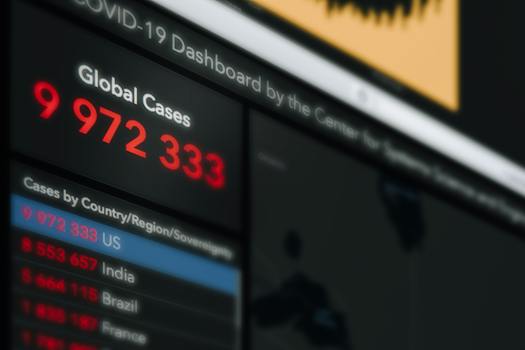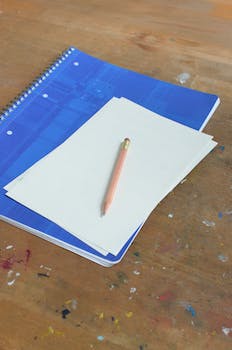

-
Table of Contents
Unleash the Power of Em and En Dashes
Introduction
Em and en dashes are punctuation marks that are often overlooked or misunderstood. However, they play a crucial role in enhancing clarity and readability in written communication. In this article, we will explore the versatility of em and en dashes, discussing their different uses and providing examples to illustrate their correct usage. By understanding the nuances of these dashes, writers can elevate their writing and convey their intended meaning more effectively.
The Importance of Em and En Dashes in Typography
Typography is an essential aspect of design that can greatly impact the readability and overall aesthetic of a piece of written work. One often overlooked but incredibly versatile tool in typography is the use of em and en dashes. These punctuation marks may seem insignificant, but they play a crucial role in enhancing the clarity and organization of written content.
Em dashes, also known as long dashes, are the wider of the two and are typically used to indicate a break or interruption in a sentence. They can be used to set off a parenthetical phrase or to emphasize a particular point. For example, in the sentence, "The weather was perfect—sunny and warm," the em dash is used to separate the main clause from the additional information about the weather. This helps to create a clear distinction between the two elements and adds emphasis to the description of the weather.
En dashes, on the other hand, are slightly narrower and are primarily used to indicate a range or connection between two elements. They are commonly used in dates, times, and numerical ranges. For instance, in the sentence, "The event will take place from 9:00 am–5:00 pm," the en dash is used to show the duration of the event. This helps to convey the specific time frame more effectively than using a hyphen or a comma.
Both em and en dashes can also be used to replace other punctuation marks, such as colons, commas, or parentheses, depending on the desired effect. This substitution can help to create a more concise and streamlined sentence structure. For example, instead of writing, "She had three options: to stay, to leave, or to compromise," one could write, "She had three options—to stay, to leave, or to compromise." This use of the em dash eliminates the need for the colon and creates a more direct and impactful sentence.
Furthermore, em and en dashes can be used to create a sense of continuity and flow within a sentence. They can be used to connect related ideas or clauses, providing a smooth transition between them. This can be particularly useful when writing complex or lengthy sentences. For instance, in the sentence, "The project requires careful planning, extensive research, and a thorough understanding of the subject matter—all of which contribute to its success," the em dash is used to connect the different elements that contribute to the project's success. This helps to maintain the coherence of the sentence and ensures that the reader can easily follow the train of thought.
In conclusion, the use of em and en dashes in typography is of utmost importance. These punctuation marks not only enhance the clarity and organization of written content but also add emphasis, create continuity, and streamline sentence structure. By understanding the versatility of em and en dashes, writers and designers can effectively utilize these tools to improve the readability and overall impact of their work. So, next time you're working on a piece of written content, don't underestimate the power of these seemingly small punctuation marks.
How to Use Em and En Dashes for Enhanced Readability

Exploring the Versatility of Em and En Dashes
Em and en dashes are punctuation marks that are often overlooked or misunderstood. However, when used correctly, they can greatly enhance the readability and clarity of your writing. In this section, we will explore the various ways in which em and en dashes can be used to improve your writing.
Firstly, let's clarify the difference between em and en dashes. An em dash is the longest of the three dashes, roughly the width of the letter "m." It is used to indicate a break in thought or to set off a parenthetical phrase. On the other hand, an en dash is slightly shorter, about the width of the letter "n," and is primarily used to indicate a range or connection between two elements.
One of the most common uses of em dashes is to indicate a sudden break or interruption in thought. For example, "I was about to leave the house—when I realized I had forgotten my keys." In this sentence, the em dash effectively conveys the abrupt shift in the speaker's thought process. Similarly, em dashes can be used to set off a parenthetical phrase, providing additional information or clarification. For instance, "The company—founded in 1995—has since become a global leader in technology."
En dashes, on the other hand, are particularly useful when indicating a range or connection between two elements. For example, "Please read chapters 5–10 for next week's discussion." In this sentence, the en dash clearly shows that the reader should refer to chapters 5 through 10. Similarly, en dashes can be used to indicate a connection between two words, such as "the London–Paris flight." Here, the en dash signifies that the flight is between London and Paris.
In addition to these specific uses, both em and en dashes can be employed to create emphasis or to add a dramatic effect to your writing. By setting off a phrase or clause with dashes, you draw attention to it and make it stand out. For instance, "She was determined—no matter the obstacles—to achieve her goals." In this sentence, the em dashes emphasize the speaker's unwavering determination.
Furthermore, em and en dashes can be used to replace other punctuation marks, such as commas, colons, or parentheses. This can help to streamline your writing and make it more concise. For example, instead of writing "The team, consisting of five members, won the championship," you can use an em dash to say "The team—consisting of five members—won the championship." This not only eliminates the need for commas but also adds clarity to the sentence.
In conclusion, em and en dashes are versatile punctuation marks that can greatly enhance the readability and clarity of your writing. Whether used to indicate a break in thought, set off a parenthetical phrase, indicate a range or connection, create emphasis, or replace other punctuation marks, these dashes offer a range of possibilities for improving your writing. By understanding and utilizing the correct usage of em and en dashes, you can elevate your writing to a new level of sophistication and effectiveness.
Exploring Creative Uses of Em and En Dashes in Writing
Exploring the Versatility of Em and En Dashes
Em and en dashes are punctuation marks that are often overlooked or misunderstood. However, these simple yet powerful tools can greatly enhance the clarity and impact of your writing. In this article, we will explore the creative uses of em and en dashes in writing, highlighting their versatility and providing examples of how they can be effectively employed.
Firstly, let's clarify the difference between em and en dashes. An em dash is the longest of the three dashes, spanning the width of a capital M, hence its name. It is used to indicate a break or interruption in a sentence, similar to parentheses or commas. On the other hand, an en dash is slightly shorter, spanning the width of a capital N. It is primarily used to indicate a range or connection between two elements, such as numbers, dates, or locations.
One creative use of em dashes is to add emphasis or create a dramatic effect. By inserting an em dash in place of a comma or parentheses, you can draw attention to a particular phrase or idea. For example, "The storm was relentless—destroying everything in its path." The em dash here adds a sense of urgency and intensity to the sentence, making it more impactful for the reader.
Em dashes can also be used to introduce a sudden change in thought or a surprising twist. They can replace a colon or semicolon to create a more abrupt transition. For instance, "She had always dreamed of traveling the world—but fate had other plans." The em dash here signals a shift in the narrative, creating a sense of anticipation and intrigue.
En dashes, on the other hand, are particularly useful when indicating a range or connection between two elements. They can replace the word "to" or a hyphen in such cases. For example, "The conference will take place from June 10–15." The en dash here clearly shows the duration of the conference, making it easier for the reader to understand.
En dashes can also be used to denote a connection between two words or names. For instance, "The New York–London flight was delayed due to bad weather." The en dash here signifies the connection between the two cities, emphasizing the direct route between them.
In addition to their individual uses, em and en dashes can also be combined to create more complex sentence structures. For example, "The team—comprised of scientists, engineers, and designers—worked tirelessly to develop a groundbreaking solution." Here, the em dash is used to set off the phrase "comprised of scientists, engineers, and designers," while the en dash connects the words "scientists" and "engineers" to form a compound adjective.
In conclusion, em and en dashes are versatile punctuation marks that can greatly enhance your writing. Whether you want to add emphasis, introduce a sudden change in thought, indicate a range, or connect two elements, these dashes can help you achieve your desired effect. By understanding their various uses and employing them creatively, you can elevate the clarity and impact of your writing. So, next time you sit down to write, don't forget to explore the versatility of em and en dashes.
Q&A
1. What is the purpose of an em dash?
An em dash is used to indicate a break or interruption in a sentence, or to emphasize certain information within a sentence.
2. How is an em dash different from an en dash?
An em dash is longer than an en dash and is typically used to indicate a more significant break or interruption in a sentence, while an en dash is used to show a range or connection between two elements.
3. Can em and en dashes be used interchangeably?
No, em and en dashes have distinct purposes and should not be used interchangeably. Em dashes are used for breaks or interruptions, while en dashes are used for ranges or connections between elements.
Conclusion
In conclusion, exploring the versatility of em and en dashes reveals their usefulness in various contexts. Em dashes are commonly used to indicate interruptions or emphasis, while en dashes are often employed to show ranges or connections. Both dashes play crucial roles in enhancing clarity and readability in written communication.











